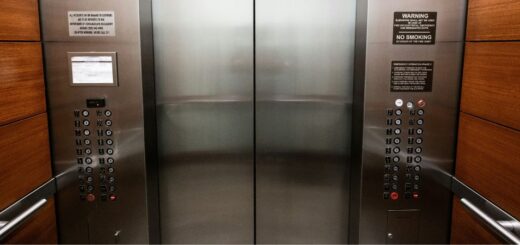Top 10 Resume Mistakes to Avoid
Did you know that most people look at a resume for only six seconds? Whether you’re writing a resume for a job, internship, scholarship, award, class assignment or application, grabbing the reader’s attention is the key to its success! The task might seem daunting, but some simple tricks can help your resume to stand out from the crowd. Here are 10 mistakes to avoid while writing or enhancing your resume.
1. Listing Your Mailing Address
Many resume-building templates feature a mailing address section, but there are numerous reasons not to include it:
- It can be a privacy infringement. Resumes are not as confidential as they used to be and tend to pass around the office more freely. You may not want everyone knowing where you live!
- It could create bias. If you live 40 minutes away from the workplace, and it clearly states this on your resume, the employer might overlook you in favor of candidates who live closer.
- It won’t be used. The employer will call or email you to get in contact for an interview, so including your mailing address just takes up two valuable lines of space.
2. Using a Personal Email Account
We all have email accounts that we created in high school — kittencuddler56@aol.com or sparkysparkyboomboom@yahoo.com.
While these are great for connecting with friends and family, they look unprofessional when listed on a resume. Instead, create a professional email address that incorporates your name, such a johnsmith23@gmail.com or jsmith@gmail.com, and use this email address exclusively for resume applications and professional correspondence. Gmail is considered a professional email platform, while AOL and Yahoo are considered less professional.
3. Putting References on the Resume
The only name that should show up on your resume is your own; otherwise, the employer might mistake someone else for you! In addition, it is common for online applications, especially, to have a separate place for you to list your three references and their contact information. Typically, you only need to provide references if the application requests them. Because it’s assumed you have references available, you don’t even need to put “references available upon request” at the bottom of your resume.
4. Not Including Volunteer, Club Membership and Personal Experience
Even if you’ve never had a job before, you still have plenty of work experience that you can put on your resume:
- Volunteer Experience: Volunteering is one of the best ways to gain free, accessible work experience without competing with other candidates for the position. In fact, many volunteer opportunities turn into jobs! If you volunteered consistently for at least several months, be sure to include it on your resume.
- Club Membership Experience: If you are a regular, participating member of an on-campus or off-campus club, such as an honor society, gaming club, STEM club, ROTC or Scouts, you can list this as experience. Don’t forget to mention whether you hold a leadership role within the club.
- Internships/Shadowing: If you’ve ever interned somewhere or shadowed a professional at a workplace, you can list these as valid workplace experiences on your resume.
- Personal Experience: Do you have a regular babysitting/pet-sitting gig? Do you mow lawns on the weekends? These count as jobs you can list on your resume as work experience!
5. Using the Same Resume Every Time
Even if you’re applying for a customer service job at three different companies, you’ll want to make sure your resume is a little different for each application. One employer might request a specific skill that another may not. Making sure your resume matches the unique job description and qualifications of each position can make or break your odds of getting an interview.
Fun fact: Most resumes get sent through a keyword scanner to determine whether you are a good fit for the job. In other words, if a resume doesn’t match the specific job description well enough, it could get kicked out before a human even looks at it! To pass keyword scanners and impress employers and application reviewers, be sure each resume you submit is unique.
6. Including Irrelevant Information
Myth: A resume is a complete summary of your life experiences.
Fact: A resume is a complete summary of your relevant life experiences that best fit the position you’re applying for!
If you’re applying for a position as a receptionist at a hospital, including your CPR certification on your resume could set you apart from others. However, if you are applying for a position at a call center where you will not be interacting with others directly, listing your CPR certification is most likely not going to help your odds.
When choosing skills, experiences and certifications to list on your resume, ask yourself: How will this help me get the position? If you can’t think of an answer, don’t include it!
7. Writing a Two-Page Resume
Remember what we revealed at the very beginning of this post — that most people only look at a resume for six seconds? You don’t want to risk dividing that attention across more than one page!
Unless you have more than 20 years of experience in your field, your resume should stick to one 8.5″ x 11″ piece of paper. This provides the best chance for important information to be seen.
8. Listing a Phone Number That Doesn’t Have a Voicemail Box Set Up
Before you list a phone number on your resume, give it a call and see if you can leave a message. Employers and application reviewers will be very discouraged (and may not call a second time) if they are unable to leave a message because the voicemail box is full or has not been set up. Do everything you can to ensure you are easy to reach.
9. Not Using Numbers
Numbers show your accomplishments in an impressive way. Which of these examples is more effective?
- “Assisted customers by providing quality service” versus “Assisted up to 100 customers per hour”
- “Stacked boxes in storage room” versus “Improved inventory space by 50%”
- “Ordered new supplies for office” versus “Ordered up to $1,000 in office supplies per month”
- “Team player” versus “Experience collaborating with up to 10 people in a fast-paced environment”
By using numbers, you quickly paint an image in the employer’s mind about the extent of your accomplishments. Think about how you can creatively use numbers, dollar amounts and percentages to your advantage!
10. Unpolished Formatting and Spelling Errors
If you were to walk into an interview wearing torn-up jeans, flip-flops and a baggy shirt, you probably wouldn’t make a very positive first impression on your employer! When it comes to physical appearance, your resume is no different.
- Read it thoroughly (either out loud or with a friend) to ensure it has no embarrassing spelling errors. Don’t rely too much on spell check — “there,” “their” and “they’re” are all words, but only one is correct for your sentence.
- Ensure that your formatting is consistently spaced and your sentences are easy to read. Use bullet points and avoid essay-like paragraphs, which can be harder to read.
- Use plain black and white colors for your font, since colored font could appear faded when printed.
- Keep your formatting consistent. List your experience and education in chronological, rather than random, order. Bold all your category titles to make them stand out. This will help the person reading your resume to navigate it as easily as possible.
Ready to start a resume of your own? Already have a resume, but hoping to polish it up? Looking for more resume tips and tricks? Be sure to visit the Career Planning & Development Center on any of the EFSC Campuses to get started!
- Every Student Needs Career Services: An Interview With Heather Allen and Lisa Hanney - May 8, 2024
- Leave Your Legacy (Paver) at EFSC - April 24, 2024
- Five Anime To Watch in College - April 10, 2024







